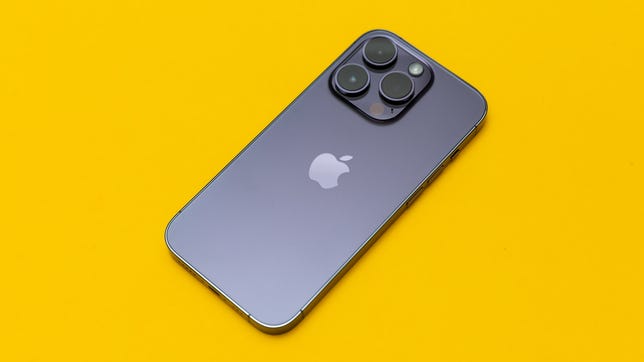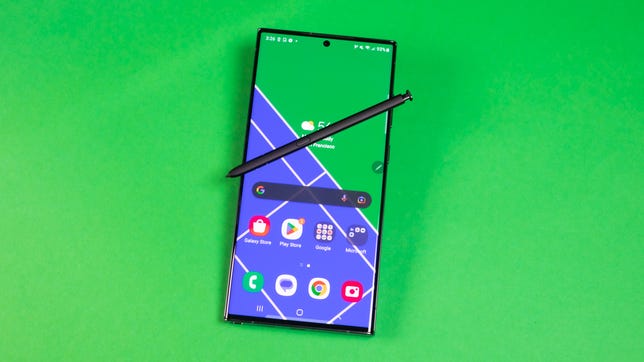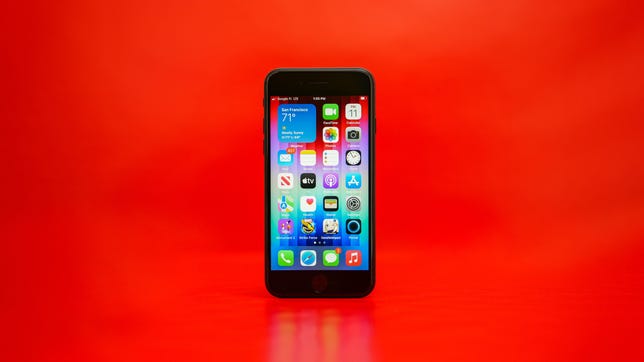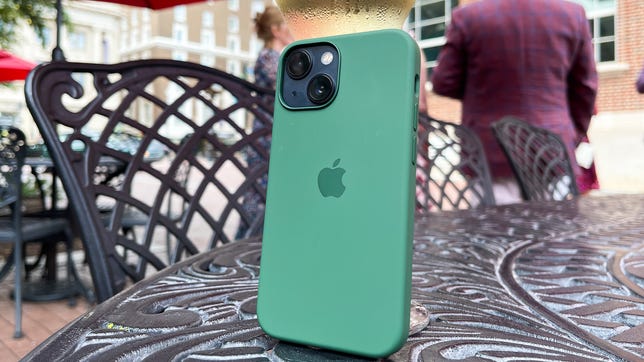Technologies
Best 5G Phones to Buy in 2023
Want the fastest data? These are the best 5G-ready phones you can buy.

The best phones to buy in 2023 — including Apple’s iPhone 14 and iPhone 14 Pro, Samsung’s Galaxy S23 range and Google’s own Pixel 7 and Pixel 7 Pro — are all 5G-ready to let you enjoy those fast data speeds. But you should expect they would be, given their high price tags. Even if you don’t want — or need — to spend big bucks on today’s top-end flagships, you can still get those sweet data speeds at lower prices. There are loads of superb affordable 5G handsets, including the excellent Google Pixel 6A and other options from the likes of Samsung, OnePlus and Motorola, too. Even Apple’s cheapest 2022 iPhone SE is 5G-enabled.
Though it won’t replace 4G in its entirety, 5G is the next generation of mobile connectivity. 5G works fast, and many industries and products can benefit from the upgraded network, including drones, self-driving cars and internet-of-things devices. Its growth across the US, the UK and the wider world has been fast, but it’s still not everywhere quite yet, so make sure 5G coverage is available — or at least coming soon — in your area before you spend your cash on a 5G-enabled handset.
Remember that a 5G phone will still work as normal on a 4G network (albeit at lower speeds), so don’t be afraid of buying a 5G phone like the S23 Ultra or iPhone 14 even if you aren’t in a 5G zone. It’s good practice to future-proof yourself; you may not be in a 5G zone right now, but it may well be that 5G will come to your area in the three years or so you have your phone, so at least you’ll be ready to take advantage of it when it arrives.
With 5G handsets being offered by every major phone manufacturer now, it can be difficult to work out which is best for you. We’ve done some of the hard work and put together a list of our top 5G-enabled phones that you can go and buy right now.
Stephen Shankland/CNET
Apple’s iPhone 14 Pro and Pro Max introduce a variety of changes, like the Dynamic Island instead of the old notch, a new 48-megapixel camera system that’s seriously impressed us, and the new A16 Bionic processor. All these upgrades come together to make for an experience that feels fresh and fast compared with older generations.
It’s the most expensive iPhone you can buy, especially if you opt for the larger Max version, but if you want the high performance and stellar camera quality of Apple’s top phone, then the iPhone 14 Pro is for you.
Andrew Hoyle/CNET
Google’s Pixel 7 range has seriously impressed us with the combination of a slick refreshed design, superb cameras and a smooth overall experience which makes both these phones a joy to use. At $599 the base Pixel 7 is an affordable option for those of you looking for a solid Android phone for all of your everyday needs.
The Pixel 7 Pro has a larger $899 price tag, for which you get a larger display and a more fully-featured camera system that includes a superb telephoto zoom lens. Otherwise its processor and interface is the same as the cheaper model, so it’s worth considering how important the extra camera features are.
James Martin/CNET
The Galaxy S23 is a lot, but in a good way. It’s more than most people need in a phone, but that doesn’t make it any less impressive. Samsung made improvements to the camera’s resolution (200 megapixels compared to 108 megapixels), color tones and dynamic range, while retaining the same edgy design and massive 6.8-inch screen as its predecessor. There’s also a new Qualcomm Snapdragon 8 Gen 2 processor that’s been optimized specifically for Samsung’s phones, which brings faster performance compared to the Galaxy S22 Ultra.
With a starting price of $1,200, it may be an understatement to call this phone expensive. But those willing to pay more for a giant screen and a high-quality, versatile camera won’t be disappointed. Read our full review of the Galaxy S23 Ultra.
Lisa Eadicicco/CNET
The Pixel 6A is Google’s most affordable phone, replacing the Pixel 5A as the $449 device in its lineup. CNET’s Lisa Eadicicco called it the «best Android phone under $500» in her Pixel 6A review, calling out how it keeps the same Tensor chip seen in the $599 Pixel 6 and many of its features.
The phone is slightly smaller than the Pixel 6, featuring an 6.1-inch OLED display and a refresh rate of 60Hz. And it has a similar camera to the Pixel 5A, including a 12.2-megapixel main camera and a 12-megapixel ultrawide camera. But by including the Tensor chip, photos can benefit from its Real Tone skin tone feature, Face Unblur, Night Sight for darker photography and the Magic Eraser for removing unwanted elements from a photo.
Patrick Holland/CNET
The iPhone SE may be the cheapest phone Apple produces, but it still comes with superfast 5G. While it lacks the camera prowess of the much more expensive iPhone 13 Pro, it runs the latest iOS 15 software and uses the same processor found in the higher-end models, making it a great phone for everyday use and light gaming.
The $700 OnePlus 11 is a powerful phone that’s well equipped to handle gaming, video streaming and other common tasks. In typical OnePlus fashion, this phone is also cheaper than the $800 Galaxy S23 and $900 Pixel 7 Pro. The cameras aren’t the best, but they’re fine for casual photographers that just want to capture their next vacation or a night out. What sets the OnePlus 11 apart from many of its rivals is its blazing fast 100-watt fast charging, which can replenish the battery in just 25 minutes. (The US version only supports 80-watt charging, but that’s still an improvement over the Galaxy S23 Ultra’s 45-watt charging). Overall, the OnePlus 11 is ideal for those who want a powerful phone that charges quickly and won’t break the bank. Read our full review of the OnePlus 11.
Patrick Holland/CNET
Although Apple’s new iPhone 14 range didn’t bring with it a new iPhone Mini, it has resulted in last year’s iPhone 13 Mini being offered at a lower $599 starting price. If you’re someone who prefers smaller, pocket-friendly devices, this is a good option to consider. The 6.1-inch iPhone 13 Mini is easy to use with one hand and even fits into tight jean pockets. While battery life isn’t as strong as others in the range, this petite Apple iPhone doesn’t sacrifice on camera capabilities or processing power.
Lisa Eadicicco/CNET
Samsung’s new Galaxy A53 5G has a lot to offer for the price. With a spacious 6.5-inch display, a camera with cameras for wide, ultrawide and macro shots and long battery life, it’s easy to forget this phone costs just $450. That also makes it $50 cheaper than its predecessor, and Galaxy A53 5G is guaranteed to get at least four generations of Android updates. It supports all three flavors of 5G: sub-6GHz, C-band and millimeter-wave.
Angela Lang/CNET
The Z Flip 4 is a phone that folds in half to become a smaller phone. When it’s open, this Samsung Galaxy phone has a big 6.7-inch display, but fold it in half and it becomes a small square that’s easy to slide into a jeans or jacket pocket. This latest generation of Samsung’s compact folding phone brings various refinements to the table including a more robust hinge and improved cameras.
The price for these quirky foldables is still higher than a regular smartphone, so you’re certainly paying a hefty premium for that folding novelty. Still, if you love the idea of having cutting-edge bendable mobile tech in your pocket, the Z Flip 4 is one of the best options to go for right now.
Michael Sorrentino/CNET
The Moto G Stylus 5G (2022) for $500 is one of the best stylus-equipped phones you can get right now, especially for the price. You get Android 12, 5G connectivity, a large 6.8-inch screen and a spacious 256GB of storage. Unfortunately, the phone is only promised one software update and three years of security updates, which is a much shorter timeline than the four years promised by Samsung for the Galaxy A53.
Yet if you want a stylus-equipped phone, the next step-up option is the substantially more expensive Galaxy S22 Ultra at $1,200. Read our Moto G Stylus 5G review.
Andrew Lanxon/CNET
OnePlus’s Nord range is sold exclusively in Europe, so people in the US will have to look on envy at this great-performing, budget 5G phone. The Nord 2T has power enough for all your everyday essentials, handles gaming perfectly well, has a decent camera setup for the price and comes with extra features including 80W fast charging, a 90Hz refresh rate and, yes, 5G speeds.
It’s a solid phone to consider if you’re looking for a flagship experience without spending top-end levels of cash.
More phone advice
- Best Wireless Charging Pads Under $20
- Best Android Phone for 2023
- Pixel 6 Event Recap: Android 12’s Release, Tensor Chip, 5G and More
Technologies
What a Ban Would Actually Mean for DJI Drone Owners and Holiday Shoppers
What’s the secret to a very un-merry shopping season? A brand new, unusable drone.
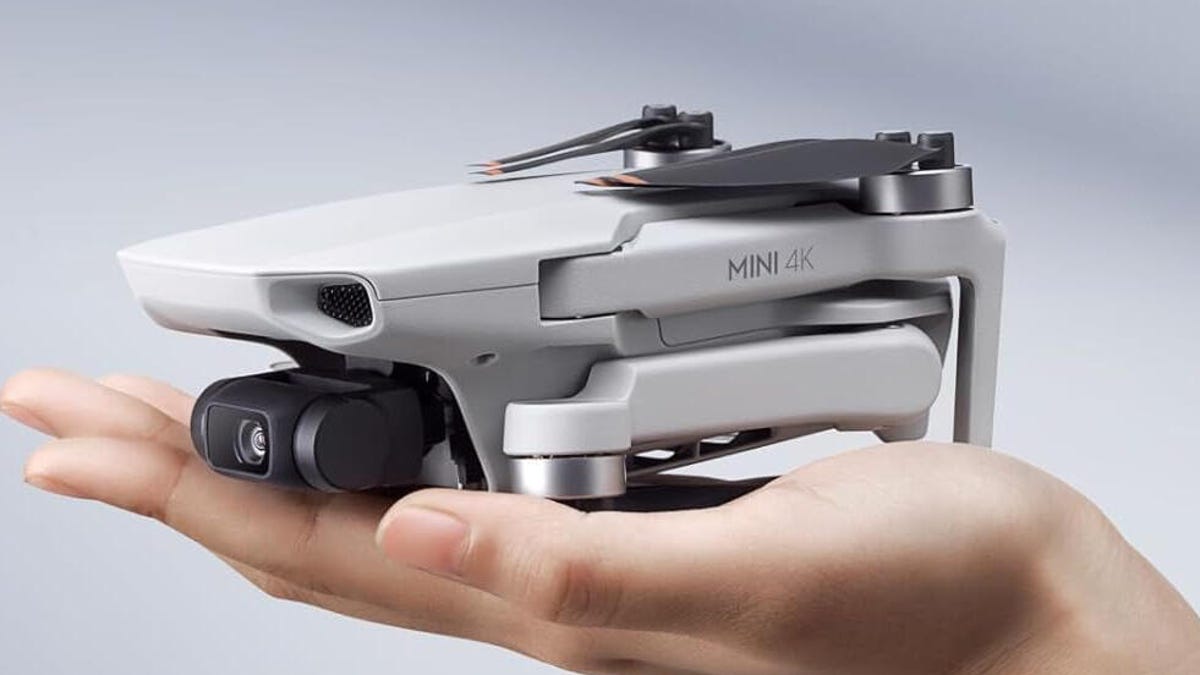
With Thanksgiving wrapped up and the Black Friday shopping sales here, if a DJI drone is on your holiday wish list, you might want to hit «buy» immediately. The company has issued a stark warning: Its drones could be banned from sale in the US, and the deadline is looming.
The Federal Communications Commission voted 3-0 at the end of October to «close loopholes» that allow tech deemed a «national security risk» to be sold in the US. In plain English, the US government is clearing the path to give DJI the same treatment it gave Chinese phone-maker Huawei, effectively banning its products from the American market.
The US government has deemed DJI, which is based in China, a security risk. It’s also considering a separate ban on TP-Link routers.
DJI is already sounding the alarm, posting on Instagram that a «deadline that could decide DJI’s fate in the US is just 43 days away» (now 19 days away). The company is warning that without an audit, its products could face an «automatic ban.» The US government has long labeled the Chinese drone maker a security risk, and it looks like the hammer might finally be coming down right before the holidays.
Don’t miss any of our unbiased tech content and lab-based reviews. Add CNET as a preferred Google source.
The vote isn’t the end of the road, however. Future bans would need to target specific products and would require a period of public consultation. But it appears the groundwork is being set for the FCC to block sales of future and some existing DJI drones from US shores, as well as products that use DJI technology.
The government has called for a DJI audit by the end of the year, but if that doesn’t happen, DJI drone products could be banned for sale by default under a national security law.
DJI asks for a security audit before any ban
A representative for DJI told CNET that while the FCC vote references a rule change that doesn’t currently apply to DJI specifically, the National Defense Authorization Act deadline in December would put Chinese companies like it on the FCC’s ban list, «without any evidence of wrongdoing or the right to appeal.»
Adam Welsh, head of global policy at DJI, said the company has repeatedly said it would be open to audit, but that «more than 10 months have now passed with no sign that the process has begun.»
«The US government has every right to strengthen national security measures, but this must go hand in hand with due process, fairness, and transparency,» Welsh said.
Welsh said DJI is urging the government to start the audit process or grant an extension.
Will DJI drone owners need to give them up?
Because the ban would apply to new sales, not drones that have already been sold, a DJI drone you already own would still be legal to use — at least under current rules.
Government agencies, however, are prohibited from purchasing or using drones from Chinese companies, including DJI.
DJI’s drones consistently rank high in their product category. In January, they dominated CNET’s list of best drones for 2025. But some of the company’s newest products, such as the DJI Mavic 4 Pro, haven’t been available for sale in the United States.
Even DJI products that are not yet banned may be hard to find. The website UAV Coach has posted a guide to the bans and reports that, due to inventory issues, most DJI drone models are sold out at retailers regardless of future FCC action.
Technologies
Today’s NYT Strands Hints, Answers and Help for Nov. 29 #636
Here are hints and answers for the NYT Strands puzzle for Nov. 29, No. 636.

Looking for the most recent Strands answer? Click here for our daily Strands hints, as well as our daily answers and hints for The New York Times Mini Crossword, Wordle, Connections and Connections: Sports Edition puzzles.
Today’s NYT Strands puzzle is a real puzzler. Some of the answers are difficult to unscramble, so if you need hints and answers, read on.
I go into depth about the rules for Strands in this story.
If you’re looking for today’s Wordle, Connections and Mini Crossword answers, you can visit CNET’s NYT puzzle hints page.
Read more: NYT Connections Turns 1: These Are the 5 Toughest Puzzles So Far
Hint for today’s Strands puzzle
Today’s Strands theme is: What a piece of work!
If that doesn’t help you, here’s a clue: You can build it in a shop.
Clue words to unlock in-game hints
Your goal is to find hidden words that fit the puzzle’s theme. If you’re stuck, find any words you can. Every time you find three words of four letters or more, Strands will reveal one of the theme words. These are the words I used to get those hints but any words of four or more letters that you find will work:
- CREW, REAM, LANE, WHEE, DELL, CANE, PULL, REVEL
Answers for today’s Strands puzzle
These are the answers that tie into the theme. The goal of the puzzle is to find them all, including the spangram, a theme word that reaches from one side of the puzzle to the other. When you have all of them (I originally thought there were always eight but learned that the number can vary), every letter on the board will be used. Here are the nonspangram answers:
- WHEEL, AXLE, LEVER, WEDGE, PLANE, PULLEY, SCREW
Today’s Strands spangram
Today’s Strands spangram is SIMPLEMACHINE. To find it, start with the S that’s three letters to the right on the top row, and wind over and down.
Technologies
Today’s NYT Connections Hints, Answers and Help for Nov. 29, #902
Here are some hints and the answers for the NYT Connections puzzle for Nov. 29, #902.

Looking for the most recent Connections answers? Click here for today’s Connections hints, as well as our daily answers and hints for The New York Times Mini Crossword, Wordle, Connections: Sports Edition and Strands puzzles.
Today’s NYT Connections puzzle is tough. If you need help sorting them into groups, you’re in the right place. Read on for clues and today’s Connections answers.
The Times now has a Connections Bot, like the one for Wordle. Go there after you play to receive a numeric score and to have the program analyze your answers. Players who are registered with the Times Games section can now nerd out by following their progress, including the number of puzzles completed, win rate, number of times they nabbed a perfect score and their win streak.
Read more: Hints, Tips and Strategies to Help You Win at NYT Connections Every Time
Hints for today’s Connections groups
Here are four hints for the groupings in today’s Connections puzzle, ranked from the easiest yellow group to the tough (and sometimes bizarre) purple group.
Yellow group hint: Middle of the body.
Green group hint: Fill-in.
Blue group hint: Nice place to hang out.
Purple group hint: Card game.
Answers for today’s Connections groups
Yellow group: Abdominal area.
Green group: Replacement.
Blue group: Park staples.
Purple group: Blackjack terms.
Read more: Wordle Cheat Sheet: Here Are the Most Popular Letters Used in English Words
What are today’s Connections answers?
The yellow words in today’s Connections
The theme is abdominal area. The four answers are core, midsection, torso and trunk.
The green words in today’s Connections
The theme is replacement. The four answers are backup, cover, relief and substitute.
The blue words in today’s Connections
The theme is park staples. The four answers are bench, pigeon, statue and tree.
The purple words in today’s Connections
The theme is blackjack terms. The four answers are bust, hit, split and stand.
-

 Technologies3 года ago
Technologies3 года agoTech Companies Need to Be Held Accountable for Security, Experts Say
-

 Technologies3 года ago
Technologies3 года agoBest Handheld Game Console in 2023
-

 Technologies3 года ago
Technologies3 года agoTighten Up Your VR Game With the Best Head Straps for Quest 2
-

 Technologies4 года ago
Technologies4 года agoBlack Friday 2021: The best deals on TVs, headphones, kitchenware, and more
-

 Technologies4 года ago
Technologies4 года agoVerum, Wickr and Threema: next generation secured messengers
-

 Technologies4 года ago
Technologies4 года agoGoogle to require vaccinations as Silicon Valley rethinks return-to-office policies
-

 Technologies4 года ago
Technologies4 года agoOlivia Harlan Dekker for Verum Messenger
-

 Technologies4 года ago
Technologies4 года agoiPhone 13 event: How to watch Apple’s big announcement tomorrow

